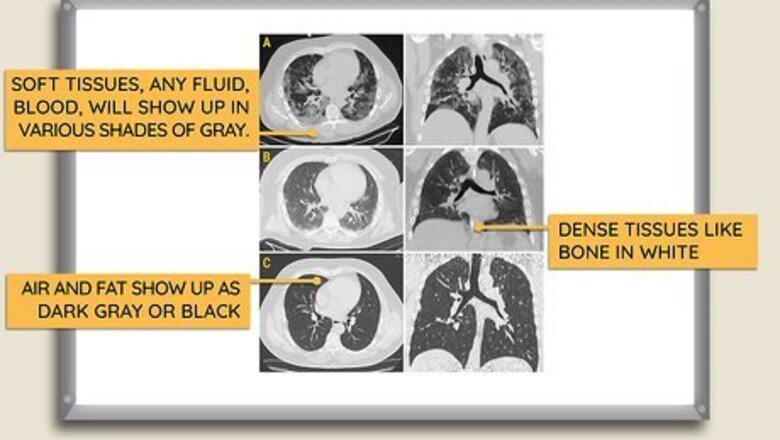
views
X
Research source
This type of radiology study is an important part of diagnosing medical diseases like strokes, cancers, and infections in the abdomen like appendicitis. You can learn to read a CT scan if you understand the normal anatomy and what the shades of white, grey, and black on the films mean.
Reading the CT Scan
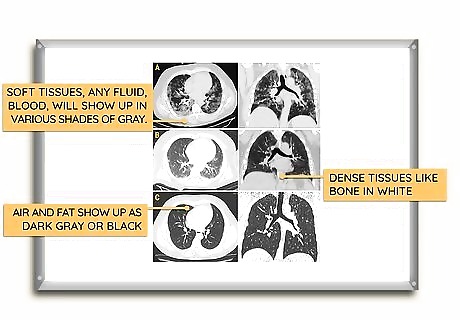
Take note of the shades of white, gray, and black. The soft tissues, fat, air, and bone inside of you are represented in these different shades. An unexpected color in a part of your body could be a sign of an abnormality. Dense tissues like bone show up as white areas. Both air and fat show up as dark gray or black. Your soft tissues and any fluid, including blood, will show up in various shades of gray. Different types of contrast, which shine bright white on the films, are used to better define the structures inside you. You swallow one type to show the fluid inside your stomach and intestines. But, another type is injected into your into a vein to show the blood in your vessels or the fluid around an organ. The latter could be a sign of inflammation, infection, or bleeding. A specific example is looking at the shading on the CT of your brain and knowing you have had a stroke. The bone of your skull is normal and shines bright white like an egg shell around the grays and black of your brain tissue. But, there is a small, faint white area surrounded by the grays and black where the stroke has occurred. Your brain tissue was deprived of blood flow in this area. The fluid which leaked out of your injured brain cells has contrast in it. This fluid is white, but it is not as bright as your skull.
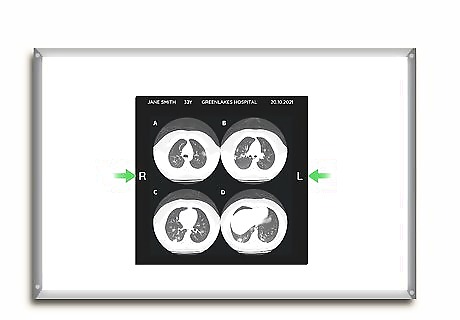
Hold the film in the proper orientation. The words on the film will let you know which side of the film should be facing towards you and where the top is. This should not be an issue if the CT films are on a disk, but you still should check. When you look at a CT scan, it is like looking in a mirror. The right side of your body will be on the left side of the film and the left side of your body will be on right. The uppercase R and L on the films tell you what side of the body is represented on the film, not the actual right and left side of the physical film. The anterior or front part of your body will be on the top of the film and the posterior or back part of your body will be on the bottom.
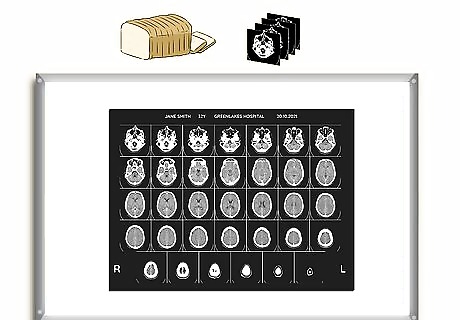
Put the films in the correct order. Numbers will be printed on the CT films. The CT scan cuts your body into cross-sections which are like very thin slices of bread. As you look at the images in order, you will notice a normal and natural flow. Any sudden breaks can suggest disease or an abnormality. When you look at the special X-rays in order, it is like watching a slow-motion film of the structures and organs inside of you and how they relate to each other. If you were looking at a CT of your chest, you would see how your large blood vessels and the bronchi (the tubes through which air flows in and out of your lungs) weave through your uniform lung tissue. Lung cancer would create a noticeable disruption in this pattern. When you view the films on your computer, you will have no issue with scrolling through the images and seeing it as a slow-moving film.
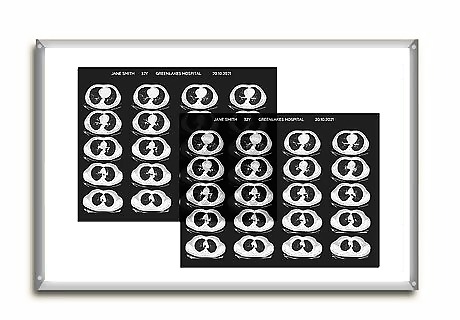
Compare the two sides to help you see abnormalities. Bilateral organs should be hard to tell apart like identical twins. The CT anatomy atlas is a good reference, but the best point of reference is the normal organ on the other side. This will not work for organs like your liver, stomach, or spleen; you only have one of each. However, your brain has two lobes. You do have two arms and legs plus organs like your kidneys, lungs, ovaries, and testicles which are bilateral.
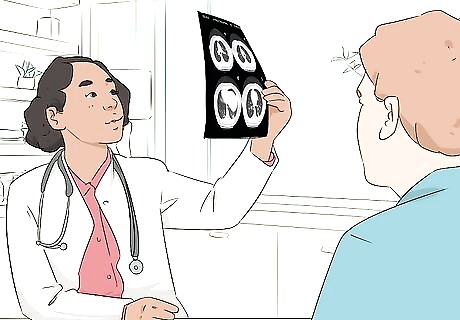
Talk to your doctor. A radiologist is a doctor who specializes in interpreting all types of X-rays, including CT scans, has read your films. She sent a report to your doctor with a detailed description of what she saw on your films. Your doctor ordered the CT scan either to find a diagnosis to explain your symptoms or as a follow-up for a medical problem like cancer, stroke, or a broken bone. You are a bit nervous or curious. It seems like the day of your doctor's appointment will never come. You have a copy of the CT and you decide to take a look. Reading a CT correctly takes a lot of practice and proper lighting. Let your doctor and the radiologist have the final word on what is normal and abnormal on your CT scan.
Components of CT Scans
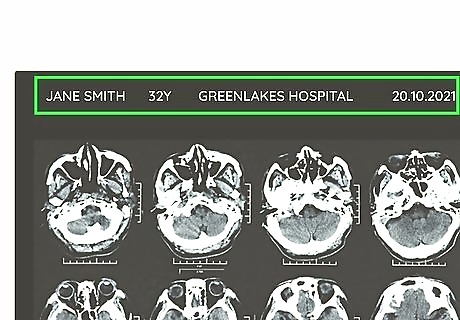
Read the information on the CT scan. Check to see what is printed on the films to determine they are yours and what part of the body is represented in the films. You should see your name and other identifying information like your birthdate. The name of the hospital or medical facility where the films were taken and the date the study was performed should be printed on each film. You do not want to look at someone else’s films and become upset if you see an abnormality. Your expectations about what you will see are determined by what part of your body was studied. The CT of your brain will be compact with your brain encased inside the thin bone of your skull. The CT of your leg or arm will be compact but it will have length; the scan will have images of your bones and the surrounding soft tissue (muscle and fat). The CT of your abdomen will be large and very complex because you will be seeing things like your small intestines curled up like a snake right next to your kidneys, liver, spleen, etc. You can go to a website like https://www.imaios.com/en/e-Anatomy which offers short explanations of CT images of the different parts of the body. This will help you focus on what is important in each area of the body like the brain, chest, or pelvis. Use more than one website and search for websites that offer free images.
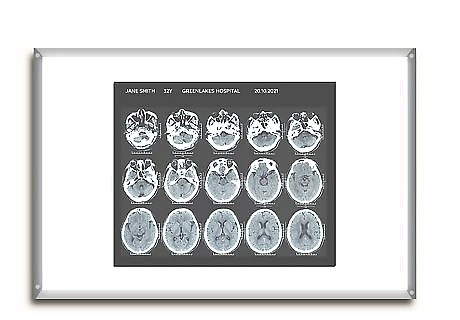
Find a good light source. If you have a printed CT scans, the films will be a little smaller than an opened New York Times newspaper. The best light source will be flat and around that size or a little larger. If your CT scan is on a computer disk, the computer screen is the “light source”. If you have a large flat screen TV and DVR capability, find a scene where there is a very bright flash filling the screen and hit pause. It may not be easy to get the TV to shine bright enough. Try holding the films near any light source. You can try a lamp with the shade off, a fluorescent light fixture, or your computer screen. You may have to keep moving the films back and forth if the light source is small.

Do not get disoriented. You need to know if the CT scan images are presented in the transverse, coronal, or sagittal plane. You must have this information when you use the anatomy atlas as a reference. Imagine yourself standing up and the CT scanner machine is cutting you into slices like bread. The transverse plane would be bread slices that start at your head and end at your feet. The coronal plane would be bread slices that begin in the front and end at your back; your face, stomach, and toes would be in the first cuts and the back of your head, your buttocks, and your heels would be in the last cuts. The sagittal cuts would start at one ear and end at the other. The CT scanner is the machine that takes special X-ray films. The CT scanner uses focused X-ray beams that are shot through your body. A certain pattern is created when these X-rays strike a special detector. A computer connected to this detector creates images based upon this pattern. You lie on a table that moves in very small increments through a large tube. A picture is taken each time you are moved. Because the tube of the scanner surrounds you in a complete circle, pictures can be taken in the three planes with ease.













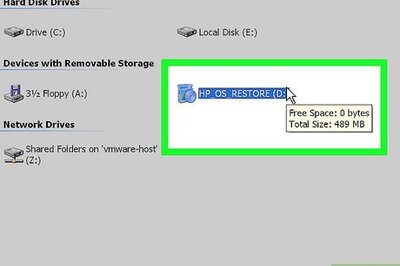
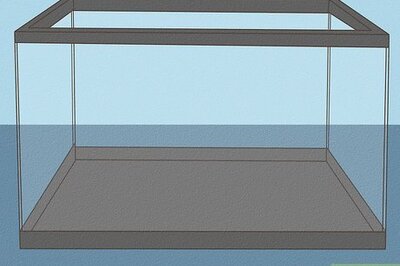

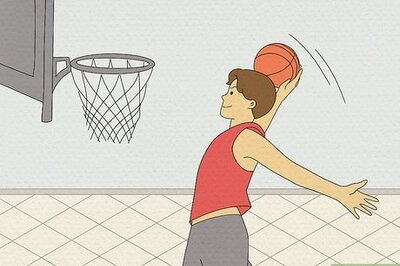



Comments
0 comment